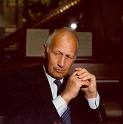Norman Cousins 1915 – 1990
June 07, 2009
 Norman
Cousins 1915 – 1990 was
a prominent political journalist, author, professor, and world peace
advocate.
Norman
Cousins 1915 – 1990 was
a prominent political journalist, author, professor, and world peace
advocate.
Norman Cousin’s wife Ellen was a staunch advocate of homeopathy, and she used the homeopathic remedy cactus to assist her husband’s recovery from a massive heart attack, as she had previously used homeopathic remedies to assist his recovery from ankylosing spondylitis, or possibly a reactive arthritis, when the allopathic doctors had practically given up on his treatment.
Norman Cousins wrote an account of his miraculous recovery in his book Anatomy of an Illness, and the publication of this book led to an explosion of interest in alternative medicine in the 1970s.
He joined the staff of the New York Evening Post (now the New York Post) in 1934, and in 1935 he was hired by Current History as a book critic. He later ascended to the position of managing editor.
He also befriended the staff of the Saturday Review of Literature (later renamed Saturday Review), which had its offices in the same building, and later joined the staff of that publication as well by 1940. He was named editor in chief in 1942, a position he would hold until 1972. Under his direction, circulation of the publication increased from 20,000 to 650,000.
Cousins’s philosophy toward his work was exemplified by his instructions to his staff “not just to appraise literature, but to try to serve it, nurture it, safeguard it.” Cousins believed that “there is a need for writers who can restore to writing its powerful tradition of leadership in crisis.”
Politically, Cousins was a tireless advocate of liberal causes, such as nuclear disarmament and world peace, which he promoted through his writings in Saturday Review.
In a 1984 forum at the University of California, Berkeley entitled “Quest for Peace,” Cousins recalled the long editorial he wrote on August 6, 1945, the day the United States dropped the atomic bomb in Hiroshima. Titled The Modern Man is Obsolete, Cousins, who stated that he felt “the deepest guilt” over the bomb’s use on human beings, discussed in the editorial the social and political implications of the atomic bomb and atomic energy.
He rushed to get it published the next day in the Saturday Review, and the response was considerable, as it was reprinted in newspapers around the country, and enlarged into a book that was reprinted in different languages.
In the 1950s, Cousins played a prominent role in the bringing the Hiroshima Maidens, a group of twenty five Hibakusha, to the United States for medical treatment.
Cousins also wrote a collection of non fiction books on the same subjects, such as the 1953 Who Speaks for Man? , which advocated a World Federation and nuclear disarmament. He also served as president of the World Federalist Association and chairman of the Committee for Sane Nuclear Policy, which in the 1950s, warned that the world was bound for a nuclear holocaust if the threat of the nuclear arms race was not stopped.
Cousins became an unofficial ambassador in the 1960s, and his facilitating communication between the Holy See, the Kremlin and the White House helped lead to the Soviet-American test ban treaty, for which he was thanked by President John F Kennedy and Pope John XXIII, the latter of which awarded him his personal medallion.
Cousins was also awarded the Eleanor Roosevelt Peace Award in 1963, the Family Man of the Year Award in 1968, the United Nations Peace Medal in 1971, and the Niwano Peace Prize in 1990.
His proudest moment by his own reckoning, however, was when Albert Einstein called him to Princeton University to discuss issues of nuclear disarmament and world federalism.
Cousins also served as Adjunct Professor of Medical Humanities for the School of Medicine at the University of California, Los Angeles, where he did research on the biochemistry of human emotions, which he long believed were the key to human beings’ success in fighting illness.
It was a belief he maintained even as he battled heart disease, which he fought both by taking massive doses of Vitamin C and, according to him, by training himself to laugh. He wrote a collection of best selling non fiction books on illness and healing, as well as a 1980 autobiographical memoir, Human Options: An Autobiographical Notebook.
Late in life Cousins was diagnosed with a form of arthritis then called Marie Strumpell’s disease (ankylosing spondylitis), although this diagnosis is currently in doubt and it has been suggested that Cousins may actually have had reactive arthritis. His struggle with this illness is detailed in the book and movie Anatomy of an Illness.
Told that he had little chance of surviving, Cousins developed a recovery program incorporating megadoses of Vitamin C, along with a positive attitude, love, faith, hope, and laughter induced by Marx Brothers films.
“I made the joyous discovery that ten minutes of genuine belly laughter had an anesthetic effect and would give me at least two hours of pain-free sleep,” he reported. “When the pain killing effect of the laughter wore off, we would switch on the motion picture projector again and not infrequently, it would lead to another pain free interval.”
Cousins received the Albert Schweitzer Prize in 1990. He died of heart failure on November 30, 1990 in Los Angeles, California, having survived years longer than his doctors predicted: 10 years after his first heart attack, 16 years after his collagen illness, and 36 years after his doctors first diagnosed his heart disease.
He and his wife Ellen raised five daughters, Andrea, Amy, Candis, and Sarah Kitt. He is buried at the Hollywood Forever Cemetery.
An obituary containing further information, mainly of his editing career, was published by the New York Times in the December 2, 1990 edition.